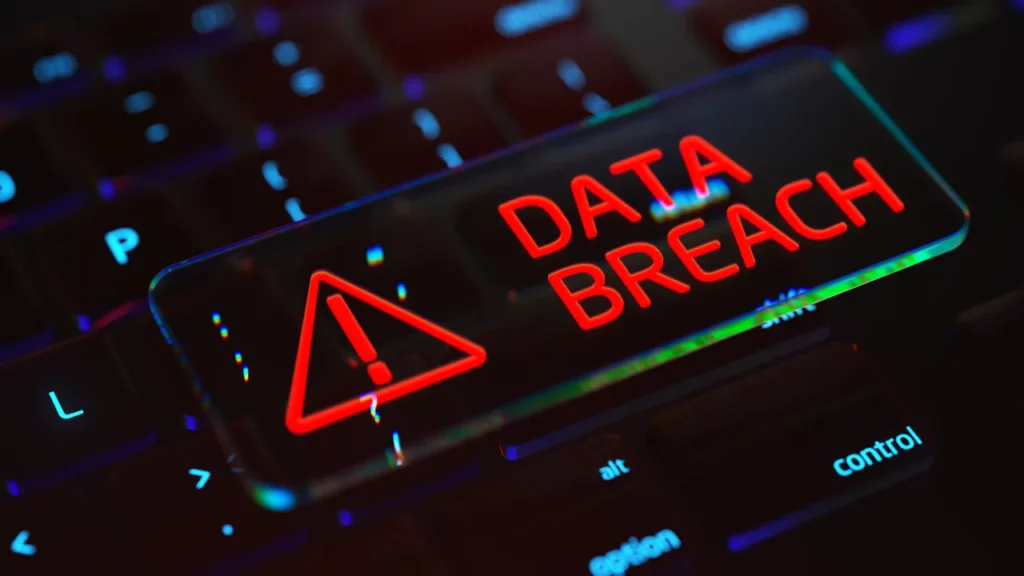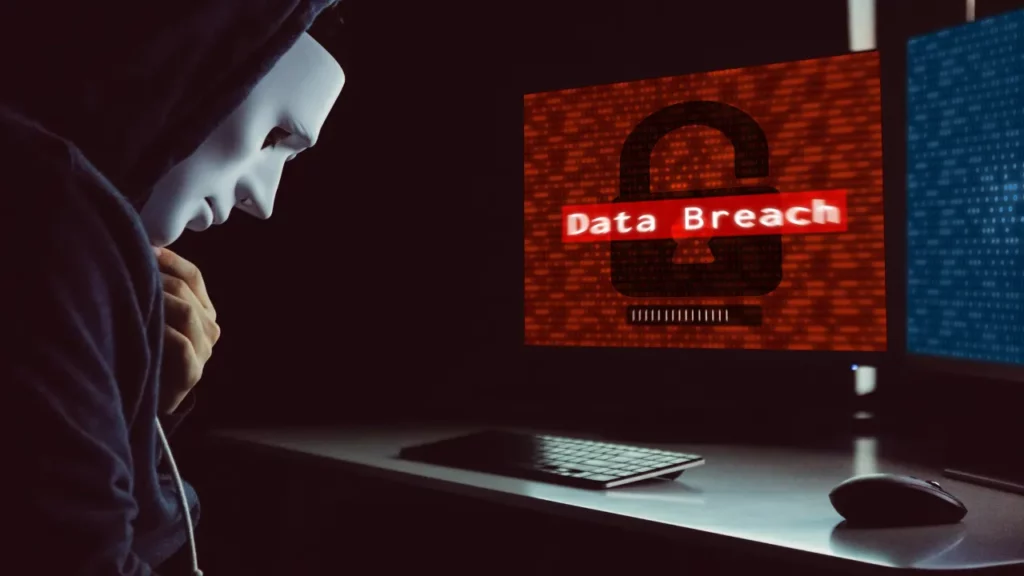Physical Address
304 North Cardinal St.
Dorchester Center, MA 02124
Physical Address
304 North Cardinal St.
Dorchester Center, MA 02124

In today’s world, data breaches have become more common than ever before. The consequences of a data breach can be devastating for both individuals and businesses. In this blog post, we will dive deep into the latest statistics and trends about data breaches, understand how hackers exploit vulnerabilities to launch an attack and explore real-life examples of data breaches and their consequences.
We will also discuss the essential elements of a data breach response plan that you need to prepare yourself for the worst-case scenario. You will learn about ways to prevent a data breach from happening in the first place, such as employee training and cybersecurity measures for protecting sensitive data.
Lastly, we will take a look at the current regulatory landscape for data breach notifications, including GDPR and CCPA compliance requirements. So stay tuned to know what actions you should take when a data breach occurs!

Data breaches are on the rise, both in frequency and severity, presenting significant risks for organizations and individuals. Cybercriminals are continuously adapting their tactics to exploit vulnerabilities and gain unauthorized access to sensitive information.
The financial impact of data breaches can be substantial, resulting in legal fees, regulatory fines, and reputational damage. Moreover, data breaches often lead to the theft of personally identifiable information (PII) and financial data, fueling identity theft and financial losses. To mitigate these risks, organizations must remain vigilant when implementing robust security measures.
By staying up-to-date with the latest internet security protocols, using password managers, and safeguarding financial information, organizations can better protect themselves against data breaches. This includes taking proactive steps to secure phone numbers, credit card numbers, credentials, email addresses, and other sensitive data from falling into the wrong hands.
Companies like Microsoft and Verizon play a crucial role in ensuring data protection and implementing strong safeguards against cyber threats. Additionally, organizations should be aware of the dark web, where stolen information is often traded and sold.
Data breach prevention requires a multi-faceted approach, including monitoring for cybersecurity incidents, enforcing information security best practices, and promptly addressing vulnerabilities.
Regulatory bodies such as the Federal Trade Commission (FTC) in the US, as well as trade secrets laws in Canada, hold companies accountable for securing sensitive data. Small businesses, in particular, should prioritize data breach prevention and response planning to avoid the potentially devastating consequences associated with these incidents.
Hackers exploit vulnerabilities through techniques like social engineering, phishing, and malware to gain unauthorized access. Weak passwords, unpatched software, and insecure network configurations are common vulnerabilities. Social engineering manipulates individuals, while phishing lures victims into revealing sensitive information. Malware infiltrates systems to exfiltrate data or disrupt operations.
Looking at real-world examples can illustrate the potential damage of data breaches:
These high-profile breaches serve as stark reminders of the financial and reputational consequences that organizations face as a result of data breaches. By compromising personal and financial information, these incidents can lead to identity theft, financial losses, and significant harm to an organization’s brand and customer trust.

Organizations need a well-defined data breach response plan to effectively handle and mitigate the impact of a breach. This plan should include clear procedures for detecting, containing, and eradicating the breach, as well as notifying affected parties.
It is crucial to designate specific roles and responsibilities within the organization to ensure a swift and coordinated response. Regular testing and updating of the response plan are essential to account for evolving threats and vulnerabilities.
Collaboration with legal, IT, and public relations teams is also crucial to minimize the impact of a data breach. By having a comprehensive response plan in place, organizations can be better prepared to respond quickly and effectively to any cybersecurity incidents that may occur.
To effectively respond to a data breach, organizations must have key elements in their response plan. The first element is the rapid detection and assessment of the breach to understand the extent of the compromise and potential risks. This involves utilizing internet monitoring tools and advanced analytics to identify any unauthorized access or unusual activities.
The second element is immediate containment measures to prevent further unauthorized access or data exfiltration. This includes isolating affected systems, disabling compromised accounts, and implementing patches or updates to address vulnerabilities.
Forensic investigation is another crucial element of a data breach response plan. It involves identifying the cause of the breach and gathering evidence for legal and regulatory purposes. This may involve engaging external cybersecurity experts or digital forensic teams to conduct a thorough investigation.
Notification is an essential element to comply with applicable laws and regulations. Organizations must notify affected individuals, customers, and relevant authorities about the breach. This includes providing clear and concise information regarding the impact of the breach and steps individuals can take to protect themselves, such as using a password manager and monitoring their financial information.
Finally, providing support and assistance to affected individuals is vital. This may include offering credit monitoring and identity theft protection services, as well as guidance on how to safeguard their personal information. By incorporating these key elements into their response plan, organizations can effectively mitigate the impact of a data breach and ensure a swift and coordinated response.

In responding to a data breach, it is essential to have a well-coordinated team with designated roles and responsibilities. The incident response team, consisting of representatives from IT, legal, communications, and senior management, should take the lead in guiding the response efforts.
IT professionals play a crucial role in containing the breach, securing systems, and conducting forensic analysis to understand the scope and impact of the incident. Legal experts provide guidance on compliance with data breach notification laws and manage potential legal liabilities that may arise.
Communications professionals handle external messaging, ensuring that timely and accurate information is shared with stakeholders to maintain transparency. Finally, senior management oversees the response efforts, making critical decisions and allocating necessary resources to effectively address the breach.
By involving these key stakeholders, organizations can ensure a swift and comprehensive response to a data breach, minimizing its impact on the business and affected individuals.
Employee training on cybersecurity best practices is essential to educate staff on identifying and mitigating potential threats. By equipping employees with the knowledge and skills to recognize suspicious emails, websites, and attachments, organizations can minimize the risk of falling victim to phishing attacks or malware infections.
Implementing multi-factor authentication (MFA) adds an extra layer of security by requiring additional verification beyond passwords. This prevents unauthorized access even if passwords are compromised. Regularly updating and patching software and systems helps address known vulnerabilities and protect against cyberattacks.
Outdated or unpatched software often contains security flaws that can be exploited by hackers. Encryption of sensitive data, both in transit and at rest, adds an extra layer of protection against unauthorized access. By converting data into an unreadable format without the encryption key, organizations can ensure that even if data is intercepted or accessed without authorization, it remains unintelligible.
Employing robust network security measures, such as firewalls and intrusion detection systems, helps detect and prevent unauthorized access. Firewalls act as a barrier between internal and external networks, while intrusion detection systems monitor network traffic for any suspicious activity, alerting administrators to potential breaches.
Educating employees about cybersecurity risks and best practices is crucial for fostering a culture of security awareness within the organization.
By providing training on topics such as recognizing phishing attempts, creating strong passwords, and handling sensitive information securely, employees become equipped with the knowledge and skills necessary to protect themselves and the company from potential threats.
Regular refresher training sessions are essential to ensure that employees stay up to date with emerging threats and evolving best practices in data security.
Empowering employees to report suspicious activities or potential security incidents is also vital for early detection and response. By encouraging a sense of responsibility and providing clear channels for reporting, organizations can take proactive measures to mitigate the impact of a data breach.
Additionally, emphasizing the importance of following security policies and procedures helps minimize the risk of human error, which can often be a weak link in data security. By prioritizing employee training in data security, organizations can create a strong line of defense against cyber threats and safeguard valuable assets, including financial information, trade secrets, and customer data.
With the ever-evolving landscape of cybersecurity incidents, continuous education, and awareness are key to staying one step ahead of malicious actors.
To ensure the protection of sensitive data, it is essential to implement strong access controls and user authentication mechanisms. This ensures that only authorized individuals can access the data, minimizing the risk of unauthorized access.
Regularly backing up data and storing backups in separate secure locations is another crucial measure. This helps mitigate the impact of data loss or ransomware attacks by providing a means to restore the data. Network segmentation is also important for protecting sensitive information.
By dividing the network into smaller, isolated segments, the potential impact of a breach can be significantly reduced. Deploying endpoint protection solutions, such as antivirus software and intrusion prevention systems, is another effective measure. These solutions safeguard against malware and other threats, adding an extra layer of security.
Lastly, conducting regular vulnerability assessments and penetration testing is vital. These measures help identify and address potential weaknesses in systems and applications, ensuring that vulnerabilities are patched and secured.
Various data breach notification laws, such as the GDPR in the EU and the CCPA in the US, require organizations to inform affected individuals about data breaches. These laws outline specific requirements for the content, timing, and method of notification. Failure to comply with these requirements can lead to hefty fines and reputational damage.
Organizations operating in multiple jurisdictions face the challenge of navigating different data breach notification laws. Staying informed about evolving regulations is crucial to ensure compliance and demonstrate a commitment to protecting customer data. Amidst the complexity of the regulatory landscape, organizations need to prioritize data breach prevention practices and tools.
These include employee training on cybersecurity risks, strong access controls, regular backups, network segmentation, endpoint protection solutions, and vulnerability assessments. By proactively implementing these measures, organizations can minimize the risk of a data breach and respond effectively if one occurs.
Organizations are required to comply with the General Data Protection Regulation (GDPR) and the California Consumer Privacy Act (CCPA) in order to protect sensitive data. The GDPR is applicable to organizations that collect personal data of European Union (EU) citizens, while the CCPA grants California residents certain rights over their personal information.
Non-compliance with these regulations can result in significant fines and penalties. Therefore, it is crucial for organizations to implement security measures to ensure GDPR and CCPA compliance. By doing so, they can safeguard sensitive information from potential data breaches and mitigate the risks associated with unauthorized access to personal data.
Implementing measures such as strong access controls, user authentication mechanisms, and regular vulnerability assessments can help prevent cybersecurity incidents and maintain information security. Organizations operating in multiple jurisdictions must navigate the complexities of different data breach notification laws and regulations to ensure compliance.
Staying informed about evolving regulatory requirements is essential for organizations to demonstrate their commitment to protecting customer data and avoiding financial gain for cybercriminals.
Steps to take when a data breach occurs include immediately notifying your IT department, contacting affected parties, working with a forensic investigator, and implementing measures to prevent future breaches. Always act swiftly to minimize the impact on your organization and protect sensitive data.
In the event of a data breach, it is crucial to respond promptly and effectively. First, activate your data breach response plan, which should include key elements such as incident assessment, containment, investigation, and notification. Each team member should know their roles and responsibilities to ensure a coordinated response.
Prevention is also essential, and this can be achieved through employee training and implementing cybersecurity measures like encryption, access controls, and regular vulnerability assessments. Stay informed about the current regulatory landscape, especially the GDPR and CCPA compliance requirements, to ensure you meet your obligations in terms of breach notifications.
Remember, preparation and quick action are key to minimizing the impact of a data breach on your organization and its stakeholders.